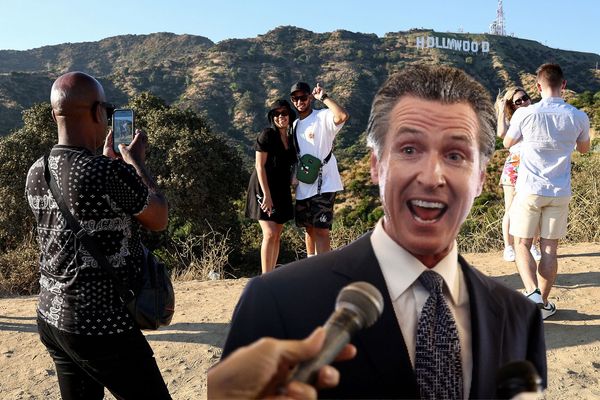
It’s a rather mixed message. No sooner have we given birth to a new female beauty trend than we line up to make fun of those stupid enough to follow it. You may have heard of the new craze for buccal fat removal, where a surgeon cuts out a glob of your cheek to give you sharper cheekbones. Chrissy Teigen is the only celebrity known to have “admitted” to the procedure, but already there is widespread mockery of famous women hollow-cheeked enough to raise our suspicions. Yes, you heard me. Buccal fat removal is in. But also very much out.
This push and pull is familiar. Large breasts were once in fashion, but there was a simultaneous trend for disdaining women who went and got some, as well as for the naturally (snigger) “endowed”. (Who could take them seriously? Certainly not Michael Parkinson, who, in a famous interview with Helen Mirren, asked her if her “equipment” made her an “unserious actress”.) In Hollywood, facelifts are still practically demanded of older actresses, but beware the “insecure victims” who get them done. “She’s looking remarkably fresh-faced,” tabloids tut meaningfully, or perhaps put the message more directly: “What on earth has she done to her face?” They tend not to dwell on the howling absence in the Hollywood lineup: older women who have not done things to their faces.
Now, lip implants are in vogue among young Instagram stars, but they are at the same time viewed as somehow immoral and low status – those who dissolve their fillers and post videos about “self-esteem” are met with much praise. Girls with fillers look fashionable but also risk seeming insecure – someone without the “inner confidence” online beauty culture is now supposed to be all about. Win the beauty race and lose another.
What is true for starlets is true for ordinary women, too. Male attractiveness is always entirely compatible with respect and power – “sexiest men” rankings mostly show the candidates in suits, as if on the way to a corner office. But women must choose. Seductive makeup, tight clothing, low cuts – all the ways a woman is shown to enhance her attractiveness – happen also to be exactly the things likely not to get her that second job interview. Hotness or respect? Beauty culture is clear on the matter: women can’t have both.
Yes, women can’t win. The phrase is almost soothing in its familiarity, so much so that we may forget to ask “but why can’t women win”? What, after all, is to stop a culture of female beauty that is also compatible with respect and power, like the male version? What is beauty culture for, anyway?
Well, the narrative goes, there is an element of biological inevitability to it. Men are “wired” to value female good looks as a sign of health and fertility – and that is why societies prize female beauty so highly. But if that were really true, why would the ideal woman look so different from year to year? In the past three decades in the UK, the celebrated beauty has veered wildly from stick thin to voluptuous, from large breasted to small, from neat mouthed to large lipped. It seems like only yesterday that bottoms were out (“does my bum look big in this?” women would ask in the 00s). Now they are very much in.
That’s not to mention the way female beauty standards vary between cultures. In Mauritania, young girls are brutally force-fed a diet of up to 16,000 calories a day, to get them obese enough for marriage, but what makes girls beautiful in Mauritania would make them ugly in many other cultures. In Ethiopia, a hugely stretched lower lip denotes female beauty. Not elsewhere. By contrast, ideals of male beauty are relatively consistent across cultures and timespans: young, fit, muscular.
These trends in female beauty can’t all be about fertility and health, otherwise wouldn’t all nations favour roughly the same robust type, a woman who looks strong enough to give birth to 10 children? And where would “size zero” culture, which had the effect in some women of stopping their periods, fit? What does foot binding, the ancient Chinese beauty practice, have to do with fertility? Could beauty culture – mutilated, starved and anxious women in its wake – in fact be about something else altogether?
Well, viewed in the round, beauty culture starts to look nothing short of abusive. It asks women to harm themselves for its pleasure, then changes its mind – it wants them to harm themselves differently. It requests women appear a certain way, then mocks them for trying so hard to please. It demands impossible things. Perhaps we should consider the possibility that female insecurity is not in fact an unfortunate side-effect of beauty culture but an end goal. Perhaps starved, anxious and humiliated women are that much easier to push around.
That was the contention of Naomi Wolf’s Beauty Myth, which had its flaws but it got much right. Impossible standards are there to wear women down, she wrote, both physically and psychologically, which makes them easier to control. Women cannot win because that is the point.
● Martha Gill is a political journalist and former lobby correspondent
Do you have an opinion on the issues raised in this article? If you would like to submit a letter of up to 250 words to be considered for publication, email it to us at observer.letters@observer.co.uk







